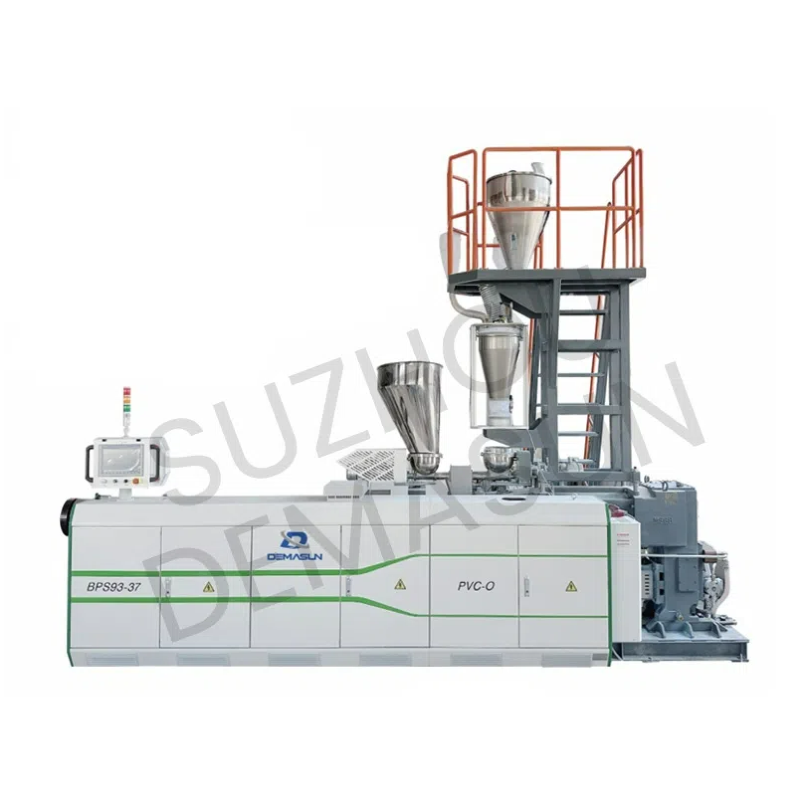- All
- Product Name
- Product Keyword
- Product Model
- Product Summary
- Product Description
- Multi Field Search
Please Choose Your Language
Views: 0 Author: Site Editor Publish Time: 2025-08-14 Origin: Site










Selecting the right OPVC Pipe Production Line represents a pivotal decision for any manufacturer aiming to produce high-quality oriented PVC pipes efficiently and reliably. With multiple technological options and varying equipment features available in the market, understanding the critical factors that influence production line performance can save time, reduce costs, and improve product outcomes.
This article explores five essential considerations when choosing an OPVC Pipe Production Line. These factors range from machinery design and process control to throughput capacity, automation, and customer support. By examining each in detail, manufacturers can make informed decisions that align with their operational goals and product specifications.
The heart of any extrusion line lies in the extruder itself, where raw PVC material is melted, mixed, and pushed through the die to form pipes. Twin-screw extruders have become the industry standard for OPVC pipe production due to their superior mixing capabilities compared to conical-screw extruders.
Parallel twin-screw extruders, ensure consistent and thorough mixing of raw materials and additives. This uniformity is crucial for producing PVC-O pipes with even wall thickness and reliable mechanical properties. Conical-screw extruders may fall short in homogeneity, risking weak spots during the extrusion and stretching processes.
Temperature control within the extrusion system is equally vital. High-quality OPVC Pipe Production Lines utilize independent temperature zones, especially around the die head, to maintain precise melt conditions. This control ensures the correct viscosity and flow rate of the molten PVC, directly affecting the final pipe's surface finish and dimensional accuracy.
Advanced lines feature segmented heating and cooling zones that allow operators to fine-tune temperatures to match raw material specifications and environmental conditions. Such precision reduces defects, improves production consistency, and extends equipment lifespan. Proper temperature management also helps prevent thermal degradation of the PVC material, ensuring pipes meet stringent quality standards.
Following extrusion, the PVC pipe must be oriented to achieve the superior strength and flexibility characteristic of PVC-O. The orientation stage uses vacuum tanks and expansion tools to shape and stretch the pipe.
Vacuum tanks provide a controlled environment where the pipe maintains a specific diameter and wall thickness as it cools and stretches. Expansion tools further orient the molecular chains by mechanically stretching the pipe circumferentially. Leading equipment manufacturers, including Rollepaal, emphasize the importance of these components in achieving high-quality pipe geometry and performance.
Cooling mechanisms complement orientation tools by stabilizing the pipe’s dimensions and molecular alignment. Water cooling remains a popular choice due to its rapid and uniform cooling capabilities. It ensures the pipe solidifies quickly, preventing distortions or shrinkage.
Air expansion methods, although less common, provide an alternative approach suitable for specific pipe sizes and materials. These systems inflate the pipe internally using air pressure while maintaining tension externally, allowing precise control over shape without direct water contact.

An OPVC Pipe Production Line’s throughput capacity significantly impacts manufacturing efficiency and profitability.
Additionally, manufacturers must consider the range of pipe diameters supported by the line. Modern extrusion systems like those from Rollepaal accommodate a wide variety of pipe sizes, often ranging from small diameters suitable for residential plumbing to large diameters used in industrial or municipal projects.
Choosing a line with flexible size capabilities allows producers to diversify their product offerings and respond to evolving market demands without costly equipment upgrades. High throughput capacity combined with versatile pipe size options can improve market competitiveness and operational scalability.
Automation plays a growing role in ensuring product quality and operational efficiency. Advanced OPVC Pipe Production Lines incorporate programmable logic controllers (PLC) that oversee multiple production parameters such as temperature, speed, and pressure.
This automation minimizes human error and allows precise adjustments during production runs. Data logging capabilities enable operators to record and analyze process data, helping identify issues early and optimize production settings for consistent output.
Remote support features provided by leading manufacturers allow real-time troubleshooting and technical assistance, reducing downtime and improving maintenance response times. Such remote capabilities are especially valuable for manufacturers located far from technical centers, enabling faster problem resolution without waiting for on-site visits.
Cost considerations extend beyond the initial purchase price of the OPVC Pipe Production Line. Although high-end lines with advanced features may demand a larger upfront investment, their efficiency, reduced waste, and lower maintenance requirements translate into substantial lifecycle savings.
Companies such as Apollo highlight the importance of evaluating return on investment (ROI) based on total cost of ownership rather than sticker price alone. Quality equipment also tends to have longer operational lifespans and better resale value.
Post-sale support is a crucial factor often overlooked during procurement. Comprehensive customer service—including installation guidance, operator training, preventive maintenance, and timely spare parts supply—can dramatically impact production uptime and product quality.
Selecting manufacturers that prioritize responsive and professional support ensures a smoother production journey and quicker issue resolution. Good support also helps operators maximize the lifespan and efficiency of their production lines through expert maintenance advice and upgrades.
Choosing the right OPVC Pipe Production Line requires careful consideration of multiple factors. From the extruder design and temperature control to orientation mechanisms, throughput capacity, automation features, and price-performance balance, each element plays a vital role in the success of your pipe manufacturing operations.
Investing in a high-quality, well-supported production line not only improves product quality and operational efficiency but also enhances your company’s competitiveness in the growing PVC-O pipe market.
For detailed specifications and personalized recommendations, contact us today. Our experts will help you compare options and select the ideal OPVC Pipe Production Line tailored to your production needs and business goals.